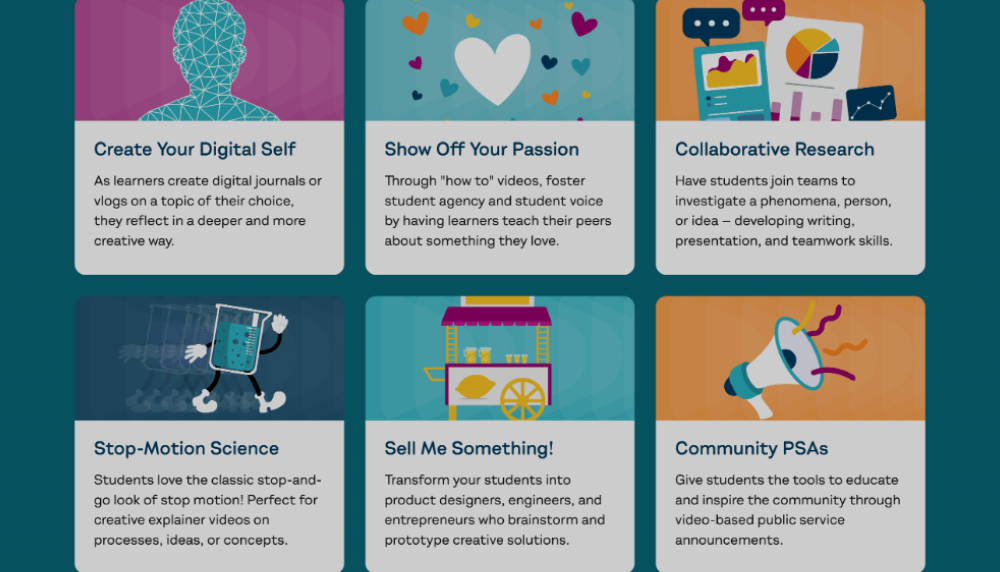- Home
- Education
- Video projects
- My View, My Place, My Story
My View, My Place, My Story
![]()
Grades: K-2, 3-5, 6-8, 9-12 | Subjects: Reading, Performing Arts, English Language Development (ELD), Social Emotional Learning (SEL), Language Arts
Students create a personal narrative and then use multimedia to tell their story. Start a free 30-day WeVideo trial to use this assignment with your students!

Assignment details
![Overview]() Overview
Overview
Anyone can create a video based on their view of the world! Students take an essay or piece they have written about themselves and turn it into a compelling and creative digital story through video.
![Objectives]() Objectives
Objectives
In this activity, students create a digital story using multiple modes (video, text, sound, images) to show their context and view of the world in order to bring us into their lives. This activity can be a lesson in a series about digital storytelling, a culminating project, or a stand-alone lesson.
![Tips & tricks]() Tips & tricks
Tips & tricks
-
Integrate this project into traditional nonfiction prose lessons to help students discover their voice.
-
This activity can also be done in a documentary film format!
-
Align this project with a writers' workshop and skill-building exercises in a non-fiction or expository writing.
-
Pare down the project by using voiceover and footage from the stock media library.
![ISTE standards]() ISTE standards
ISTE standards
-
Knowledge Constructor 1.3.c
-
Creative Communicator 1.6.d
-
Global Collaborator 1.7.a

/Stock%20(with%20filter)/AdobeStock_436767512.webp)
/Education/education-overview-resource-2.webp)